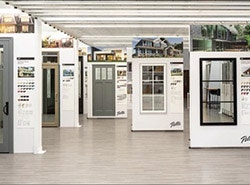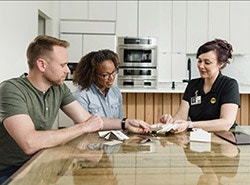Top 4 Things to Think About when Choosing Sunroom Windows
A sunroom isn’t a sunroom without walls of windows and bright natural light. When choosing the best sunroom windows for your space, consider these four things.
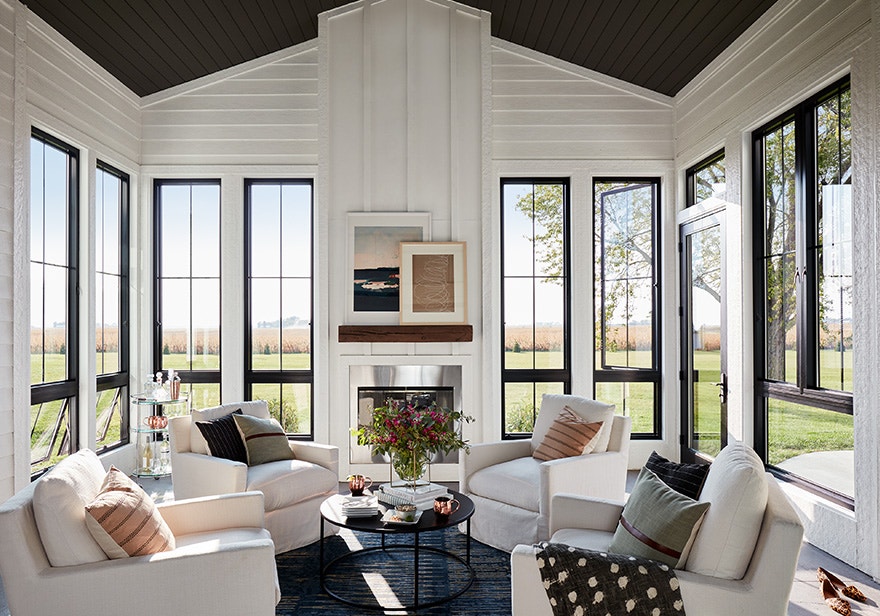
KEY TAKEAWAYS
- Choosing the right type of sunroom window—casement, double-hung, sliding, or picture—depends on your ventilation needs, available space, and accessibility.
- Selecting the best frame material (wood, fiberglass, or vinyl) impacts durability, maintenance, and energy efficiency, with each offering unique benefits for sunrooms.
- Energy-efficient glass options like Low-E coatings and dual- or triple-pane windows help block harmful UV rays and reduce heat transfer, making sunrooms more comfortable and cost-effective.
Homeowners who have a sunroom often say it’s their favorite room in the house. What makes a sunroom so special is its walls of windows and bright natural light. It’s a place to lay low, bask in the sun and enjoy nature from the comfort of your home. Windows are the focal point of any sunroom. When selecting windows for your sunroom, think about these four factors:
1. Types of Sunroom Windows
First things first, think about the type of window you’d like in your sunroom. Do you want it to open and close? Do you have space for it to swing open to the exterior? Will some of the windows be hard to reach? There are many questions to consider when deciding on windows. Below are some of the most common types of windows for sunrooms:
Casement Windows for Sun Porch
Easy to open, casement windows are a great choice for sunrooms. On a nice day, you’ll want windows that allow fresh air to flow through the space. Casement windows are especially convenient because they open with ease even in spots that are hard to reach. For instance, a casement window is easy to open even if there is furniture in front of it. With the simple turn of a crank or glide of the Easy-Slide Operator, these windows swing outward to let in refreshing air and a breeze.
Double-Hung and Sliding Sunroom Windows
Unlike casement windows, which swing outward, double-hung and sliding windows require no additional exterior space to operate. Double-hung windows can be raised from the bottom or lowered from the top with two sashes that move independently and overlap each other. Sliding windows glide open horizontally from one side to overlap the other. Since both types of windows slide on a track, they are popular in sunrooms that overlook a deck, walkway or porch. In addition to maximizing interior and exterior space, double-hung and sliding windows are easy to operate and allow fresh air to circulate through the room.
Picture Windows for Sunroom
If ventilation isn’t a priority or if your windows will be placed in tall spaces, picture windows are the way to go. These windows do not open. Ideal for floor-to-ceiling sunroom window designs, picture windows are often placed out of reach above other operable windows. They come in many different sizes and bring in stunning amounts of natural light. Picture windows also provide enhanced security and energy efficiency, given that they do not open.
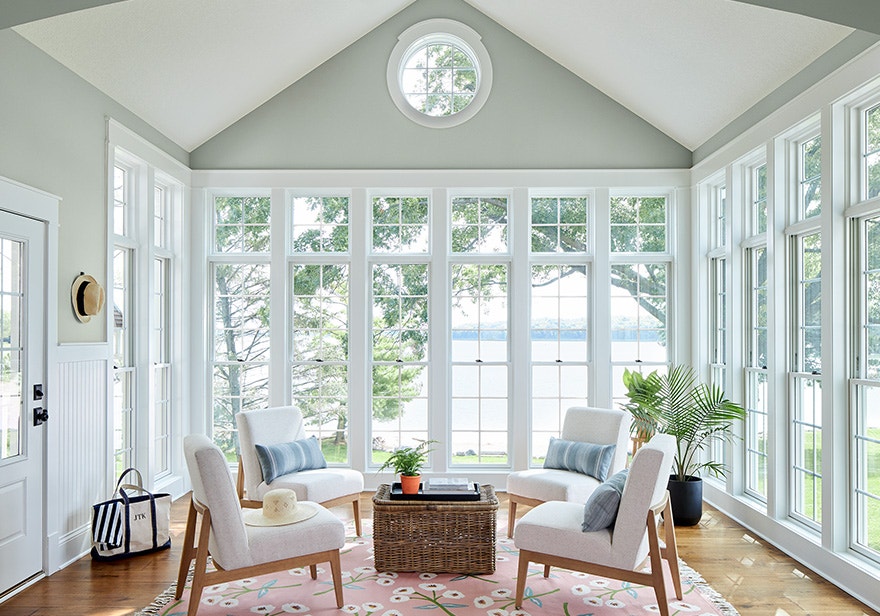
2. Window Frame Materials Best Suited for Sunrooms
Choose from wood, fiberglass or vinyl sunroom windows. As you read through the materials below, you’ll find that each option offers benefits that make it well-suited for a sunroom space.
Wood Windows for Natural Beauty and Warmth
Wood windows offer natural beauty and warmth, artfully blending the sunroom with the outdoors. Selecting wood windows affords you with more customization options than other materials. One of the most popular customization options, especially in sunrooms, is adding blinds-between-the-glass, available on Lifestyle Series windows. These add privacy and can block the sun from your space. Plus, with window fashions tucked between panes of glass, they are protected from dust, damage and little hands.
Fiberglass Windows for Strength and Durability
Fiberglass is a naturally strong and durable material. In fact, Pella’s proprietary fiberglass material is the strongest material for windows, engineered for lasting durability.9 It will never rot or corrode, and it resists dents, bends and breaks. For sunrooms, fiberglass windows are a good choice as they are naturally resistant to water and bugs. You’ll never need to paint or refinish your fiberglass windows and the material resists chipping, chalking and fading.
Vinyl Windows for Fade Resistance and Easy Maintenance
Vinyl windows are high quality, energy efficient and budget friendly. They are easy to care for as the vinyl formula allows for excellent weathering and color retention. Multi-chambered frames in vinyl windows help reduce thermal transfer and provide additional support to the window. This makes them a strong and energy-efficient choice for sunrooms.

3. Energy-Efficient Window Glass for Sunrooms
With so many windows on multiple walls, sunlight pours into sunrooms from all different angles throughout the day. In a sunroom, you want all the natural light you can get, without the harmful ultraviolet (UV) rays that typically come with it. That’s why it’s crucial to choose energy efficient glass options that can help block harmful UV rays and slow the transfer of heat.
Low-E, or low-emissivity, glass has a coating that is applied to help reflect heat and keep your home comfortable. It helps prevent your carpet, furniture and sunroom window treatments from fading. Also think about whether you want dual-pane or triple-pane windows for your sunroom. Both of these choices offer enhanced energy efficiency compared to single-pane windows. In dual- and triple-pane windows, there is insulating space between each pane of glass. Inert argon gas or air can be used between panes of glass to offer additional layers of insulation and help reduce thermal transfer, saving energy and money.
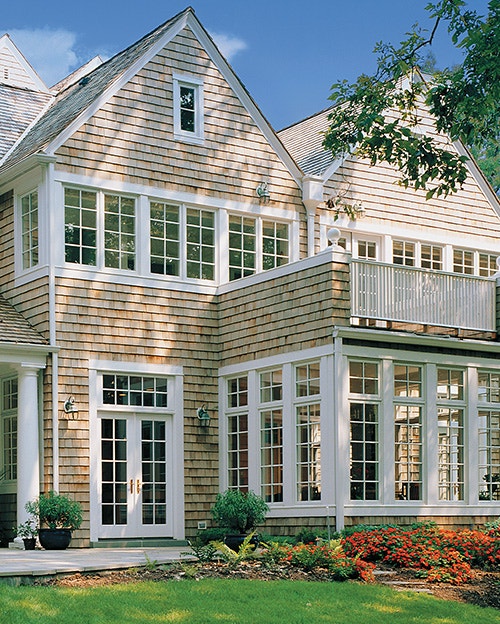
4. Placement of Sunroom Additions
Depending on where your home is located, there tend to be certain sides of your house that are better suited for the addition. For example, if you live in a cool climate, place your sunroom windows on the southern side of the home to enjoy the most light and warmth. In warmer climates, we recommend sunrooms be installed on the north or northwest side of a home to help reduce the intensity of the heat. Also consider privacy from your neighbors and noise reduction from traffic when deciding where to place an all-seasons sunroom.
When thinking about sunroom ideas, windows can make or break the vision you have for the space. Consider these four things to help you choose the best windows for a sunroom.
